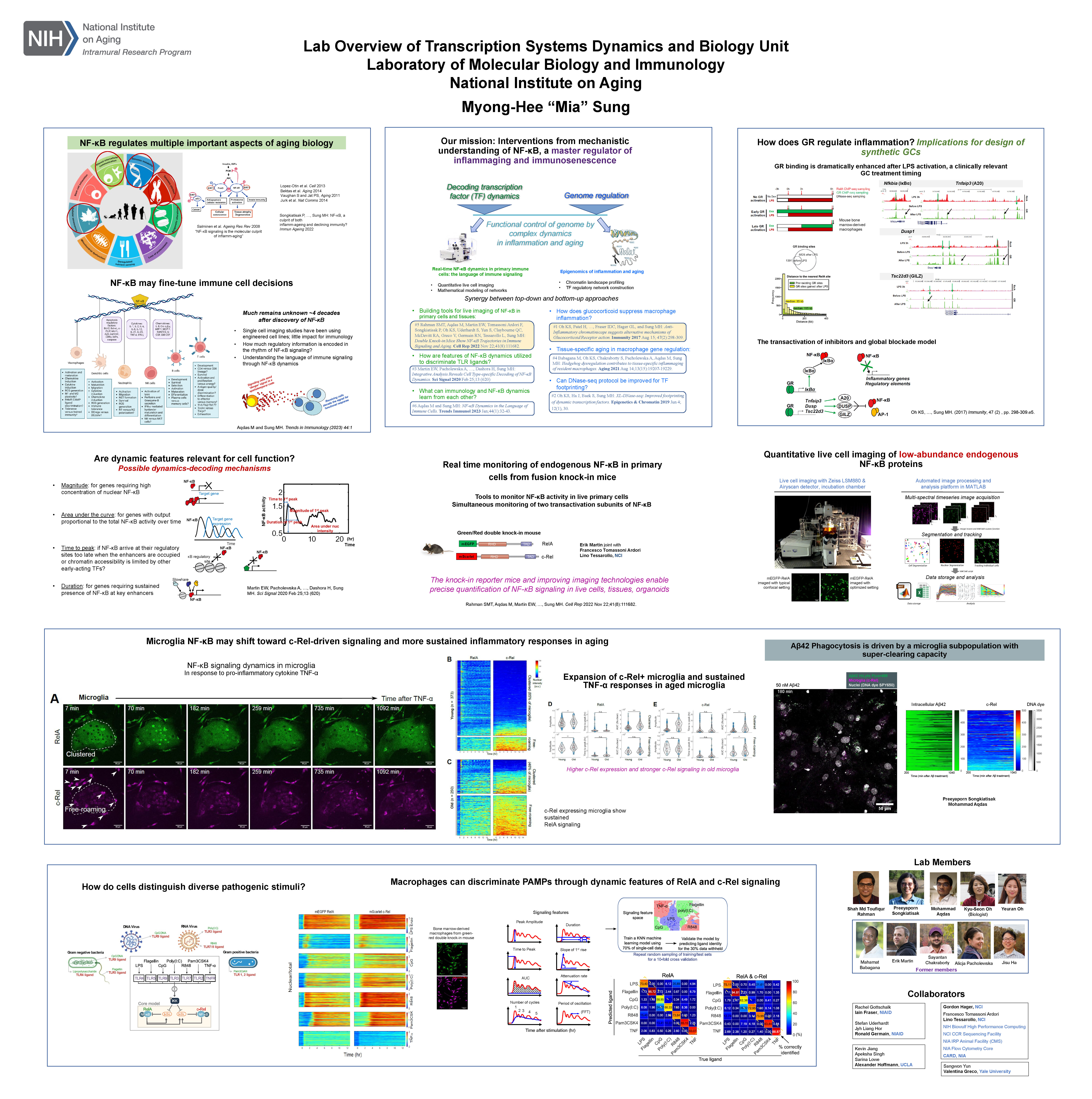
Systems Biology

Discovering the hidden rules of tissue-specific responses to inflammation
Discovering the hidden rules of tissue-specific responses to inflammation
This collaboration between the Altan-Bonnet (NCI), Buckley and Coles (Oxford) labs addresses how organs generate distinct inflammatory responses despite sharing common components like immune cells, fibroblasts, and the extracellular matrix. In collaboration with additional teams from the Netherlands, and Canada, we aim to uncover the molecular, cellular, and tissue-level rules governing organ-specific inflammation.
We hypothesize that (1) organ context and cellular experience shape the perception of inflammatory signals, and (2) organ-specific hierarchies integrate responses into coordinated outcomes. Using a data-driven approach, we will combine ex vivo and in silico models of mouse and human tissues to explore these mechanisms. High-throughput robotics will generate diverse tissue models with varying sensitivities to infection or immunopathology. Multimodal datasets from these models will be analyzed using machine learning to build computational models, to guide iterative cycles of discovery.
This project will revolutionize tissue biology by creating a unified framework for understanding tissue-specific inflammation, paving the way for new treatments. We are seeking researchers with expertise in bioengineering, computer science, or immunology to join this interdisciplinary effort.
Project keywords: immunology, systems biology, biomedical engineering.
Integrative multi-omics approaches to identifying signatures of asthma in the African diaspora
Integrative multi-omics approaches to identifying signatures of asthma in the African diaspora
Asthma is a common, complex, and chronic disease that is characterized by inflammation of the airways, airway hyperresponsiveness, and bronchospasms. It has major health disparities, and unfortunately populations that bear the greatest burden of disease are minimally represented in genomics research. The Consortium on Asthma among African-ancestry Populations in the Americas (CAAPA) seeks to discover genes and mechanisms conferring risk to asthma in populations of African ancestry, utilizing multi-omic data. A multi-omics approach in nasal epithelium using RNASeq and DNA methylation in CAAPA led to the confirmation of well-known T2 mechanisms in asthma risk, but also identified novel wound healing and medication response signatures, providing new information about the biological mechanisms underlying asthma in the underrepresented African ancestry populations. We have a greatly expanded opportunity including serum proteomics, RNASeq on PBMCs, and additional DNA methylation to test if an expanded systems biology / integrative omics approach can further refine axes of dysregulation in CAAPA and develop models to predict asthma endotypes that are derived off ‘local’ and ‘systemic’ signatures of asthma pertaining to the nasal epithelium and serum/PBMCs, respectively.
Quantitative imaging and pooled CRISPRi screening of single cells to understand transcription factor signaling dynamics
Quantitative imaging and pooled CRISPRi screening of single cells to understand transcription factor signaling dynamics
Quantitative imaging and pooled CRISPRi screening of single cells to understand transcription factor signaling dynamics. NF-κB is a master regulator of inflammation, immunity, and cell stress responses. The temporal dynamics of NF-κB signaling capture pathogen-specific information and govern the corresponding gene expression patterns. Recent studies have revealed that distinct NF-κB signaling profiles can lead to specific epigenetic modifications within potential enhancer regions of the genome, potentially establishing epigenetic memory for subsequent infections.
In this project, our goal is to investigate the impact of epigenetic perturbations on NF-κB signaling dynamics. We will utilize CRISPRi and a pool-genetic approach to systematically disrupt all potential enhancer regions around NF-κB-regulated genes. Additionally, we will conduct live-cell microscopy to quantitatively measure the resulting changes in NF-κB signaling dynamics. The insights gained from this study will illuminate the functions of the enhancer regions of NF-κB-regulated genes and will provide information on how tissue-specific NF-κB signaling is shaped by the epigenome, through the formation of epigenetic memories. The student will learn various interdisciplinary methods involving cell culture, quantitative microscopy, fluorescent reporter assays, automated single-cell analysis, molecular biology, and imaging data analysis.

The role of metabolic division of labour in determining lifespan
The role of metabolic division of labour in determining lifespan
Life thrives on collaboration – this extends to the molecular scale, where life is fueled by the chemical processes collectively called metabolism. Microorganisms exchange nutrients through cross-feeding, and multicellular organisms are made up of cells with different metabolic roles and needs. These collaborations allow for division of labour, for example between germline and soma. Social insects provide an ideal study system to understand metabolic division of labour for two reasons:
1. They subvert the classic life-history trade-off between longevity and fecundity with long-lived highly fertile queens and small short-lived sterile workers, and
2. Many ant colonies engage in frequent mouth-to-mouth social exchanges of experimentally accessible fluids that contain endogenously produced materials.
These exchanges are so frequent that they form a social circulatory system that distributes material across the colony, allowing metabolic costs to be allocated locally while benefits are distributed across the collective. Our lab has done ample groundwork on this system in charactering the proteins that are socially transferred between individuals, where they are produced, when and by whom.
This project has two parts. One will focus on tracking protein flow between individuals using stable-isotope proteomics and quantitative feeding measures. The second will quantify the metabolic costs of production for the producers and the longevity benefits for receivers using RNAi, artificial diets, and measurements of physiology, oxidative stress, and metabolic rate. Disentangling metabolic division of labour in ant colonies, where we can monitor exchanges easily, will hopefully allow us to better understand how some of our tissues lighten the load of others and how to better extend life- and health-span.
Negroni & LeBoeuf. Metabolic division of labor in social insects. 2023 COIS https://doi.org/10.1016/j.cois.2023.101085
Hakala SM, Meurville MP, Stumpe M, LeBoeuf AC. 2021. Biomarkers in a socially exchanged fluid reflect colony maturity, behavior, and distributed metabolism. Elife 10. doi:10.7554/eLife.74005
Kramer BH, Nehring V, Buttstedt A, Heinze J, Korb J, Libbrecht R, Meusemann K, Paxton RJ, Séguret A, Schaub F and Bernadou A. (2021) Oxidative stress and senescence in social insects: a significant but inconsistent link? Philosophical Transactions of the Royal Society B, 376(1823), 20190732.


